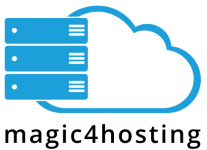DirectAdmin for Beginners: A Step-by-Step Guide to Installation and Configuration
Introduction
DirectAdmin is a popular web hosting control panel that offers a user-friendly interface for managing websites, email accounts, databases, and more. It is favored by web hosts and webmasters for its ease of use and extensive features.

Advantages of DirectAdmin:
- User-friendly: The intuitive and straightforward interface makes it easy for users to navigate, even for beginners.
- Feature-rich: Provides all the necessary features to manage hosting, including account management, email, databases, file management, security, backup, and restore.
- Highly customizable: The interface allows customization of the look and feel, layout, and functionality according to user needs.
- Multi-platform support: Supports various popular operating systems such as CentOS, Debian, Ubuntu, and Fedora.
- Stable performance: Operates stably and smoothly on various server configurations.
- Large support community: A large community of users and developers are readily available for support when needed.
Disadvantages of DirectAdmin:
- Dated interface: The default interface may appear outdated and not modernized to current trends.
- Installation speed: The installation process can be slower compared to some other control panels.
- Pricing: The paid version can be more expensive than some competitors.
How to Install DirectAdmin:
1. Choose a hosting provider:
The first step is to select a hosting provider that supports DirectAdmin. Compare the features, pricing, and support offered by different providers before making a decision.
2. Install DirectAdmin:
There are two popular ways to install DirectAdmin:
Method 1: Using the curl command:
Method 2: Using wget:
wget -O directadmin.sh https://www.directadmin.com/setup.sh bash directadmin.sh
3. Basic configuration:
After installation, you need to configure some basic information such as:
Changing the password:
Creating a user account:
Configuring email:
Configuring the database:
Note:
- Replace username with the desired username.
- Refer to the DirectAdmin documentation for detailed configuration instructions.
DirectAdmin Usage Guide:
DirectAdmin provides various features and functions for managing hosting. Here are some basic usage guides:
- Account management: Create, edit, delete user accounts, manage access permissions, set storage limits, etc.
- Email management: Create, edit, delete email accounts, set up mailboxes, manage email filters, etc.
- Database management: Create, edit, delete databases, manage database users, grant access permissions, etc.
- File management: Access, upload, download, edit website files, manage directories, etc.
- Security: Configure firewall, install SSL, protect against brute-force attacks, etc.
- Backup and restore data: Backup website data, email, databases, restore data when needed.
Tips for Optimizing DirectAdmin:
- Update to the latest version: Ensure you are using the latest version of DirectAdmin for the best performance and security.
- Optimize settings: Configure settings to match your specific hosting needs. This may involve adjusting resource allocation (CPU, memory) for user accounts, setting email quotas, or enabling specific modules based on your requirements.
- Security best practices:Implement strong passwords for all user accounts and the root user.
- Enable two-factor authentication (2FA) for added security.
- Regularly update DirectAdmin to the latest version to patch vulnerabilities.
- Utilize the built-in firewall functionalities to restrict unauthorized access.
- Consider additional security measures like IP deny lists and custom security modules.
- Manage server resources: Monitor server resource utilization (CPU, memory, disk space) to ensure smooth operation. DirectAdmin provides tools to track resource usage by users. You can adjust resource allocation or upgrade your server hardware if needed.
- Automate tasks: DirectAdmin offers automation features through CustomBuild scripts. These scripts allow you to automate repetitive tasks like user account creation, software installation, or backup routines.
- Explore advanced features: DirectAdmin offers a vast array of functionalities beyond basic management. Explore features like:
- Domain pointers: Allow a single domain name to point to multiple directories on your server.
- Subdomains: Create subdomains under your main domain for specific purposes.
- Cron jobs: Schedule tasks to run automatically at specific times or intervals.
- File manager features: Utilize advanced functionalities like file compression, decompression, and archive management.
- Email filters: Implement advanced email filtering rules to manage incoming emails effectively.
- Security modules: Explore additional security modules offered by DirectAdmin or third-party developers to enhance server protection.
Learning Resources for DirectAdmin:
- DirectAdmin Documentation: The official DirectAdmin documentation provides comprehensive guides on installation, configuration, and using various features. https://docs.directadmin.com/
- DirectAdmin Forums: The DirectAdmin community forums are a valuable resource for finding solutions, asking questions, and staying updated on the latest developments. https://forum.directadmin.com/
- Webinars and Tutorials: Several online resources offer webinars, tutorials, and video guides on using DirectAdmin effectively.
Conclusion:
DirectAdmin is a powerful and versatile web hosting control panel suitable for beginners and experienced users alike. Its user-friendly interface, extensive features, and customization options make it a popular choice for managing web hosting needs. By following the installation guide, understanding basic usage principles, and implementing optimization tips, you can leverage DirectAdmin to efficiently manage your web hosting environment. Remember to prioritize security best practices and stay updated on the latest features and security patches. This will ensure a smooth and secure web hosting experience for you and your website visitors.















